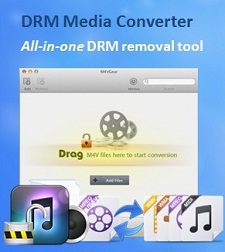Top 10 Causes of iOS Data Loss & How to Recover
Data loss of iOS devices is an unpleasant experience especially for those who rely on iPhone or iPad for business. Because losing important files always costs lots of time and money to get it fixed. So knowing the most common causes of data loss can help you to prevent and avoid it in the future. The causes of data loss are varied and here we are just listing the top 10 most common reasons to cause data loss for most iOS users.

Top 10 Reasons Why You Lost iOS Data
1. Accidental Deletion of iOS Data
While most iOS users don't want to admit it, one of the most common reasons for data loss is user error. Most users may delete photos, videos, contacts, text messages, etc. from iPhone, iPad or iPod by pressing the wrong button.
Tip: Every time when you need to delete files from iOS devices, just keep in mind to check carefully they are the exact ones you want to delete.
2. Jailbreak Failure of iOS Devices
Jailbreak, especially the failed one would cause data loss of your iPhone, iPad or iPod. Besides, jailbreaking your iOS devices voids the warranty, and this operation often got stuck in DFU mode. Thus, you may end with having no access to your data.
Tip: Before you decide to jailbreak your iPhone, iPad or iPod, be sure that you are able to do it in right way, otherwise it's risky that you will lose your data stored on that device.
3. Physical Damage of iDevices
Another common cause of iOS data loss is the physical damage of the device, such as dropping into water, falling onto ground, etc.
Tip: Be careful to keep your iDevice in a safe place and always remember to sync your iPhone, iPad or iPod with iTunes for backup.
4. iOS Device Loss
The device loss here may refer to losing the iDevices by carelessness or the device is stolen.
Tip: Pay attention to put your iPhone in safe place when there are crowds of people.
5. iOS Upgrade
Many users may have encountered the data loss after update iOS versions even after restoring the rest of the device's settings as in the norm.
Tip: Remember to build up the habit to back up your iOS data to iTunes or iCloud every time before you try to update your device to new iOS version.
6. iOS System Crash
iOS crashing like camera library, mail or contact app crashing will put your iOS device into blank screen with Apple logo in white. Then you find all your photos, contacts were gone after it came back.
Tip: Till now, there seems to be no actual reason for this white Apple logo of death. aybe you should be careful when installing some unsecure App on your iOS device.
7. Restore to Factory Settings
Restoring your iPhone to factory settings may remove all of your personal information although it retains some of its apps.
Tip: Remember to backup your iOS data before you restore factory settings. If you forget to backup, refer to the last part of the content to recover the lost data of iOS.
8. Replacing iOS Device Battery
Since all flash memory (except RAM) in iOS device is retained without power, replacing the battery has the same effect as resetting your device, which will erase your files on it.
Tip: You'd better to improve your iOS battery is you can.
9. iOS Virus Attack
Sometimes if you got virus attack on your iOS device, you may also lose the data saved on it.
Tip: Be careful when installing Apps on the device.
10. Device Locked by Forgotten Password
If you have set a password on iOS device to protect your personal information but unfortunately forgot the password, you may get stuck in the locked screen and have no access to your data.
Tip: Write down the password and keep it in a safe place to avoid forgetting the password.
How to Recover iOS Data if You Accidentally Deleted It from iPhone/iPad/iPod?
No matter how much attention you have paid to protect your data from losing, it happens sometimes. If that happens to you one day, you can simply try a remedy to recover the lost data from your iPhone/iPad/iPod in a few clicks.
iOS Data Recovery Professional is specially designed for data recovery on iPhone/iPad/iPod to recover all types of data, like contacts, photos, videos, messages, bookmarks, notes, reminders, App and more, no matter whether you have backup or not. It's able to recover iOS data directly from iPhone, iPad or iPod, or from iTunes or iCloud backup.
You can simply download and install it to your computer to have a try. Or you can visit: general guide of recovering lost data from iOS devices on Mac (Windows).

